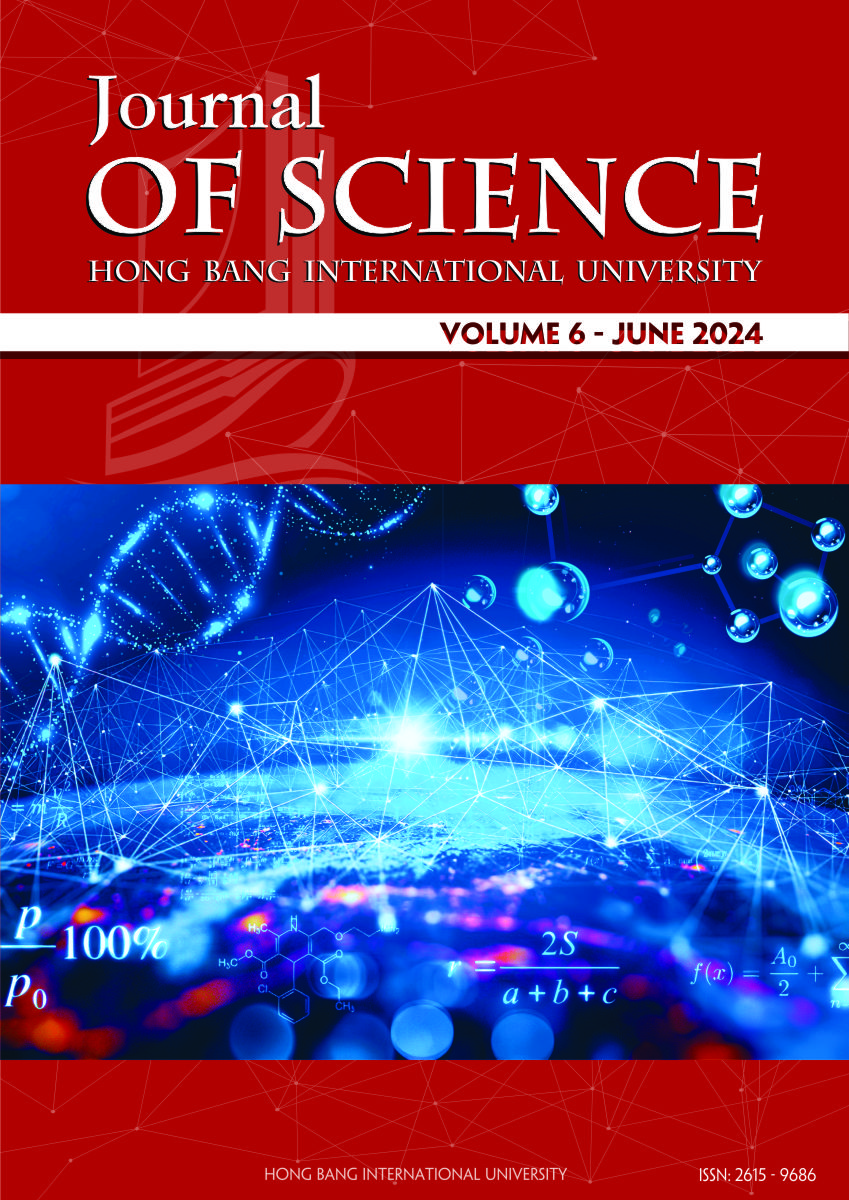A new approach for data clustering based on granular computing
Các tác giả
DOI: https://doi.org/10.59294/HIUJS.VOL.6.2024.632Từ khóa:
Data clustering, Information granule, Unsupervised learning, Accuracy of the algorithm , Clustering of information, Granular ComputingAbstract
This paper introduces a new clustering technique based on granular computing. In traditional clustering algorithms, the integration of the high shaping capability of the existing datasets becomes fussy which in turn results in inferior functioning. Furthermore, the laid-out technique will be able to avoid these challenges through the use of granular computing to bring in a more accurate and prompt clustering process. The creation of a novel algorithm hinges on utilizing granules, which are the information chunks that reveal a natural structure as part of the data and also help with natural clustering. A testing of the algorithm's features is carried out by using state-of-the-art datasets and then an algorithm's effectiveness is compared to the other clustering methods. The results of the experiment show significant improvement in clustering accuracy and reduction in data analysis time, thus testifying how granular computing is efficient in data analysis. This quest is not only going to serve as a reinforcement in data clustering, but it will also probably be an input in the broader area of unsupervised learning, reinforcing positions for scalable and interpretable solutions for data-driven decision-making.
Tài liệu tham khảo
[1] J.-S Zhang and Y.-W. Leung, “Improved Possibilistic C-Means Clustering Algorithms”, IEEE Trans. on Fuzzy Systems, vol. 12(2),pp.209-217, 2004.
DOI: https://doi.org/10.1109/TFUZZ.2004.825079[2] Q. H. Hu, J. F. Liu, and D. R. Yu, “Mixed Feature Selection Based on Granulation and Approximation”, Knowledge-Based System, vol.21, pp.294-304, 2008.
DOI: https://doi.org/10.1016/j.knosys.2007.07.001[3] Tang, Y., Gao, J., Pedrycz, W., Hu, X., Xi, L., Ren, F., & Hu, M. (2024), “Modeling and Clustering of Parabolic Granular Data”, IEEE Transactions on Artificial Intelligence, 1(01), 1-15.
DOI: https://doi.org/10.1109/TAI.2024.3377172[4] Ding S., Huang H., Yu J. (2015), “Research on the hybrid models of granular computing and support vector machine”, Artificial Intelligence Review, 43(4), pp.565-577.
DOI: https://doi.org/10.1007/s10462-013-9393-z[5] Dong H., Li T., Ding R., Sun J. (2018), “A novel hybrid genetic algorithm with granular information forfeature selection and optimization”, Applied Soft Computing, 65, 33-46.
DOI: https://doi.org/10.1016/j.asoc.2017.12.048[6] Fu C., Lu W., Pedrycz W., Yang J. (2019), “Fuzzy granular classification based on the principle of justifiable granularity”, Knowledge-Based Systems,170, pp.89-101.
DOI: https://doi.org/10.1016/j.knosys.2019.02.001[7] Alswaitti M., Ishak M. K., Isa N. A. M. (2018), “Optimized gravitational based data clustering algorithm”, Engineering Applications of Artificial Intelligence, 73, pp. 126148.
DOI: https://doi.org/10.1016/j.engappai.2018.05.004[8] Sanchez M.A., Castillo O., Castro J.R., Melin P. (2014), “Fuzzy granular gravitational clustering algorithm for multivariate data”, Information Sciences, 279, pp. 498511.
DOI: https://doi.org/10.1016/j.ins.2014.04.005[9] X. Hu, Y. Tang, W. Pedrycz, K. Di, J. Jiang and Y. Jiang, "Fuzzy Clustering With Knowledge Extraction and Granulation," in IEEE Transactions on Fuzzy Systems, vol. 31, no. 4, pp. 1098-1112, April 2023, doi: 10.1109/TFUZZ.2022.3195033.
DOI: https://doi.org/10.1109/TFUZZ.2022.3195033[10] J. Xie, W. Kong, S. Xia, G. Wang and X. Gao, “An Efficient Spectral Clustering Algorithm Based on Granular-Ball”, in IEEE Transactions on Knowledge and Data Engineering, vol. 35, no. 9, pp. 9743-9753, 1 Sept. 2023, doi: 10.1109/TKDE.2023.3249475.
DOI: https://doi.org/10.1109/TKDE.2023.3249475[11] Truong, H. Q., Ngo, L. T., & Pedrycz, W. (2016, October), “Advanced fuzzy possibilistic C-means clustering based on granular computing”, In 2016 IEEE International Conference on Systems, Man, and Cybernetics (SMC) (pp. 002576-002581). IEEE.
DOI: https://doi.org/10.1109/SMC.2016.7844627Tải xuống
Tải xuống: 86











